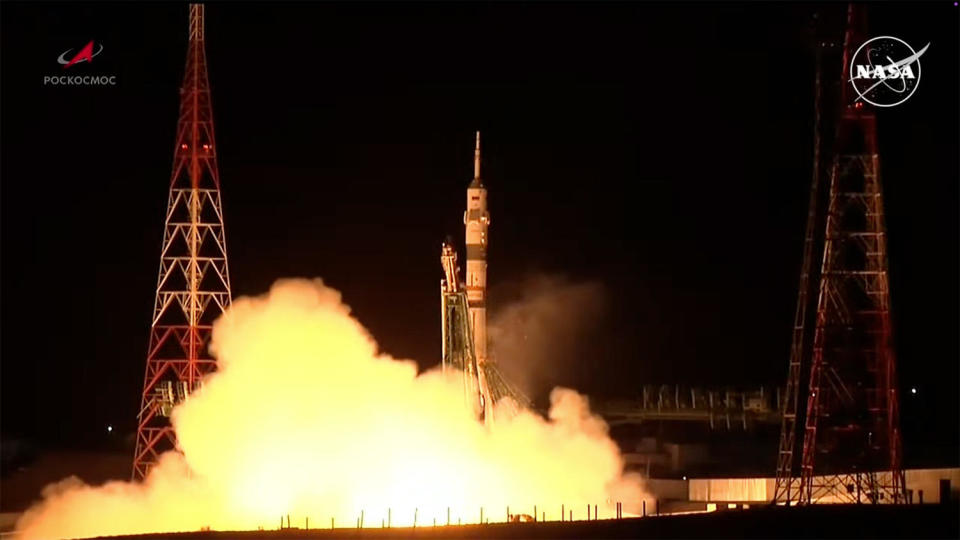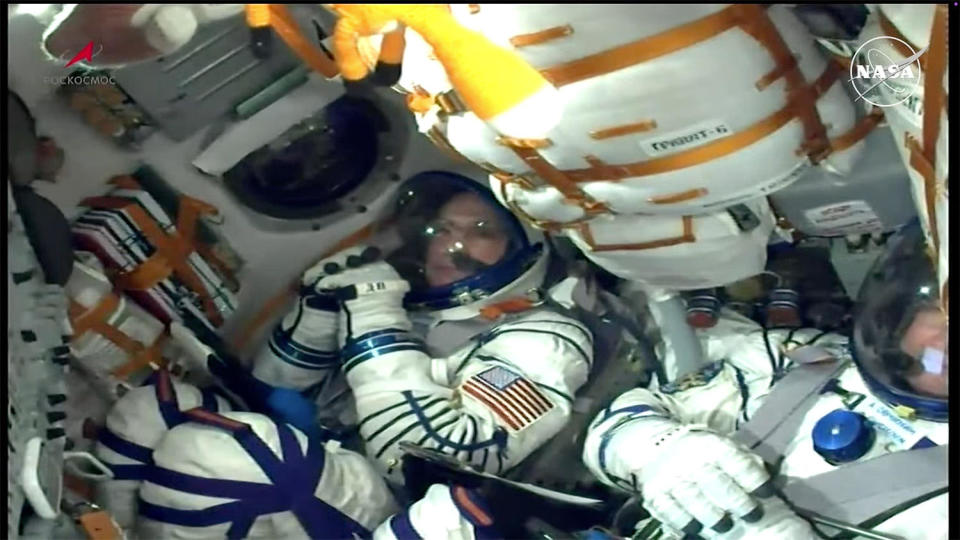While the commercial Polaris Dawn The crew was preparing for the first non-governmental spacewalk. A NASA astronaut and two Russian cosmonauts blasted off Wednesday on a more traditional space flight, launching to the International Space Station aboard a Soyuz ferry for a service period of six months.
Space station veteran Donald Pettit, who at 69 is NASA’s oldest active astronaut, Soyuz MS-26/72S commander Alexei Ovchinin and cosmonaut Ivan Vagner launched at 9:23 p.m. local time aboard a Soyuz 2.1a rocket from the Baikonur Cosmodrome in Kazakhstan.

The ascent into space went smoothly and nine minutes after launch the Soyuz was released to fly independently.
The launch brought the total number of people in orbit at the time to a record high of 19, spread across four different spacecraft: nine aboard the space station, four aboard the Polaris Dawn Crew Dragon, three aboard the Chinese space station and three aboard the Soyuz.
It is Pettit’s fourth spaceflight since his first visit to the space station in 2002-2003, and his first launch in 12 years.
The “most profound” change he has noticed since his last flight is the “number of people flying in space now, partly thanks to our international partners, partly thanks to the commercial providers that we have now and then the private astronauts,” he told an interviewer before launch.
“I think space is a vibrant place right now,” he added. “It’s starting to open up like the Wild West, and I think we’re going to see an incredible expansion of people living and working in an orbital environment.”
The privately financed Polaris Dawn flightchartered by billionaire Jared Isaacman, launched Tuesday from the Kennedy Space Center, setting a new altitude record for a piloted spacecraft since Apollo.
Isaacman and his crewmate Sarah Gillis, a SpaceX crew trainer, plan to conduct the first nongovernmental spacewalk tonight, the first commercial excursion into the vacuum of space in the more than 470 government-sponsored spacewalks to date.


The Soyuz launch was scheduled to rendezvous with the International Space Station in two orbits over a three-hour period, after which the rocket would dock with the Earth-facing Rassvet module at 3:33 p.m. local time.
The Soyuz crew they are replacing, Commander Oleg Kononenko, Nikolai Chub and NASA astronaut Tracy Dyson, are on hand to welcome the new crew aboard. Also on hand to welcome the new crew are NASA’s Crew 8 pilots, Commander Matthew Dominick, Mike Barratt, Jeanette Epps and cosmonaut Alexander Grebenkin.
Also on board: Starliner commander Barry “Butch” Wilmore and pilot Sunita Williams, now more than three months into their mission after an unexpected eight-and-a-half-month stay.
They originally planned a short eight-day visit to the station during a test flight of Boeing’s Starliner spacecraft. But helium leaks and problems with the booster rocket forced NASA to cancel the Starliner back to earth early Saturday without his crew. Wilmore and Williams will now arrive home in February aboard a SpaceX Crew Dragon ferry ship.
Pettit gave a matter-of-fact answer to a reporter’s question about what he was most looking forward to after arriving at the space station.
“Once the hatches are open and we’ve all congratulated our crew, I’ll probably go straight to the toilet,” he said. “And then the (multi-window) dome.”


Kononenko and Chub, accompanied by NASA astronaut Loral O’Hara, were launched aboard another Soyuz on September 15, 2023. O’Hara spent six months aboard the station and returned to Earth last April with two other cosmonautsand left Kononenko and Chub on the station to complete a year-long mission.
Dyson flew to the space station in March to replace O’Hara and will join Kononenko and Chub aboard the same spacecraft when they return to Earth on Sept. 23. Upon landing, Kononenko will have spent 1,111 days in orbit during his five missions, setting a new record for the longest cumulative time in space.
Pettit, who has a doctorate in chemical engineering, is a veteran of three flights totaling 370 days in space. He last flew aboard the space station in 2011-2012 and became a popular figure for his impromptu “Saturday morning science” experiments that demonstrated unusual aspects of weightlessness with MacGyver-like ingenuity.
One of his most popular demonstrations: a collapsible, open plastic container he invented for drinking coffee in the absence of gravity. His makeshift “cup” relied on a specific shape and surface tension to keep the coffee in the container while directing the liquid to the rim for sipping.
“This might be something that future space colonists will use when they want to have a party and make a toast. They can drink their coffee and tea out of these cups, like we do here on Earth, without having to suck it out of a bag,” he said 15 years ago on NASA TV. The YouTube video has been viewed 3 million times.
In the 12 years since his last flight, Pettit has mentored younger astronauts and helped plan for NASA’s Artemis lunar program. But he has never lost the urge to fly aboard the space station again.
“I miss being in space every day,” he told an interviewer before the launch. “I feel like a cowboy who should be out on the range riding a horse, but instead I’m flying on a desk. It’s nice to get back on the horse and go out on the range.”


Pettit’s professional focus is space station research, but he’s also an accomplished amateur astronomer and photographer who’s eager to work with new lenses that can capture the Earth, cities and other particularly intriguing objects in the dark in razor-sharp detail.
“One of my specialties is imaging at night,” he said. “The nighttime Earth is very special to me. I’m an amateur astronomer, and … it’s not just looking at the Earth, it’s looking at the Earth, the horizon, the atmosphere on the edge, and all the natural phenomenology that happens from the point of view of being in orbit.
“And I’m really looking forward to improving the nighttime imagery. I’ve actually talked NASA into flying some new lenses that are highly optimized for nighttime imagery, and they just arrived at the station. So I’m looking forward to using these nighttime-optimized lenses.”
The arrival of Pettit, Ovchinin and Vagner is the first step in a carefully orchestrated series of launches and landings conducted twice a year to replace the space station’s seven permanent crew members.
Kononenko, Chub and Dyson will undock and return to Earth on September 23. The next day, NASA and SpaceX plan to launch another Crew Dragon carrying astronaut Nick Hague and cosmonaut Alexander Gorbunov to the space station.
The Crew Dragon normally carries four long-duration station pilots, but NASA has removed two astronauts — Stephanie Wilson and Zena Cardman — of the Crew 9 mission to free up seats for Wilmore and Williams when they return to Earth with Hague and Gorbunov in late February.
In the meantime, Hague, Wilmore, Williams and Gorbunov will replace Dominick, Barratt, Epps and Grebenkin, who aim to return to Earth around October 1.
Donald Trump’s Remarks in Springfield, Ohio, and Other Debate Moments
Vote on Mike Johnson’s funding bill fails in Congress
Tyre Nichols death trial begins with opening statements; 3 Memphis officers charged